|
AHARS'
Visit to the
Railway Signal,
Telegraph and Aviation Museum.
|
INTRODUCTION:
In May, about 30 members of AHARS visited this amazing small museum.
There's something there for every interest - railway, radio, aviation and even
the Transport History of South Australia.
Our expert guides were Eric Kelly, Don Temby, and John Newell. They seemed to
know their subjects in great detail, and with a great deal of passion.
Two videos were shown at the start of the evening:
The first about Railway Safety, its complexities and history, and
the second about the epic air voyage of Sir Ross and Sir Keith Smith by paper
glider from England to Australia in 1919.*
Each video was rivetting (no pun intended) in its own way, and no doubt of
extra interest to amateur radio types, as we all seem to have a fascination
for mechanical things.
RAILWAY SIGNALS.
After a few serious accidents late in the 19th century, safety on the track
soon became of prime importance.
The various signals and safety mechanisms devised to improve this are on display,
and the staff can explain their often complex workings in any degree of detail
that you wish.
Interlocking devices, token rings, and rigorously enforced procedures, all developed
over the years to make rail travel the safest in the World for many generations.
TELEGRAPH
Working displays of railway telegraph systems were demonstrated and explained.
Modern systems use computers and remotely controlled electronics, but the old
mechanical systems were reliable and fascinating, particularly as one can see
how they worked.
Working Morse code keys are available for visitors to demonstrate their prowess.
Some of the "keys" on display were used in aircraft, surely not an
easy task in the early, open aircraft.
CIVIL AVIATION HISTORY
THE VICKERS VIMY FLIGHT FROM ENGLAND TO AUSTRALIA IN 1919.
*For those who think that I exaggerate about the type of aircraft that the
Ross brothers flew, I recommend a visit to both the museum, and to Adelaide
Airport (to see the original aircraft). The Vickers Vimy is certainly a paper
glider in comparison to what we travel by today!
Let's not forget the mechanics, Wally Shiers and Jim Bennet, and the support
crews which provided fuel in out-of-the-way spots along the way.
The story of this flight is told in various displays in the museum.
There is also an RAAF (Royal Australian Air Force) Memorial Room.
CIVIL AVIATION FACILITIES
A working flight control console is on display, with a radio receiver
broadcasting the transmissions from Adelaide Airport.
| John explaining railway items to Lloyd (VK5BR); "harmonic"
of Graham (VK5ZFZ), and a future member; and Leith (VK5QH). |
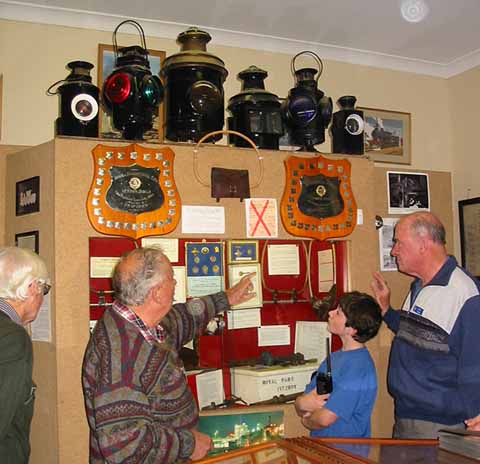 |
| Closeup of some of the vintage railway signalling
lamps. (CT). |
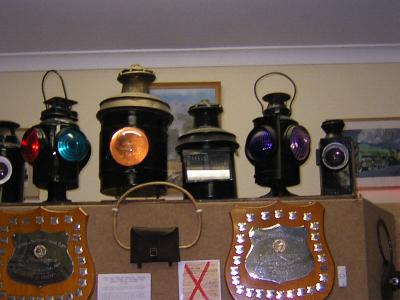 |
| Other ancient exhibits included John VK5NX, Club President
Geoff (VK5TY), and committee member Jim (VK5JST.) |
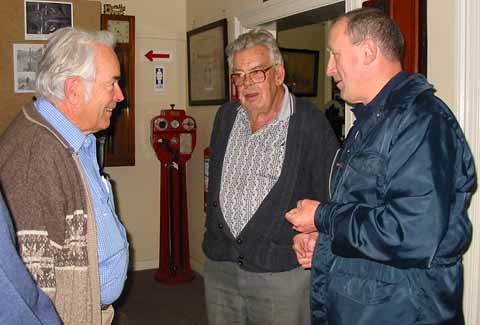 |
|
Large model (wingspan about 1.2 metres) of the Vickers Vimy.
Ident "GE-AOU", (God 'elp all of us."
(CT).
|
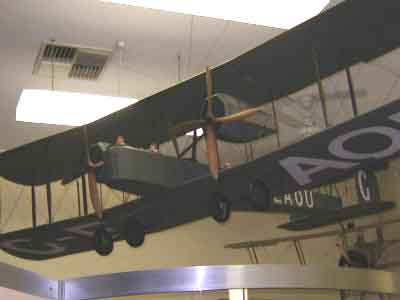 |
|
|
|
Model of WW2 fighter, the P-38 Lightning.
(Background removed.)
|
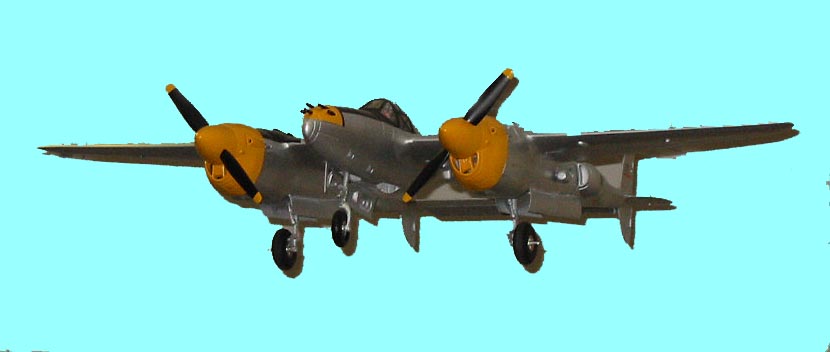 |
|
Morse Code expert, Rob (VK5RG), testing the Morse key.
(CT).
|
 |
| |
|
The Railway Signal, Telegraph and Aviation Museum
Location: 112 Marion Road, Brooklyn Park.
Phone (08) 8234 5304, or Eric Kelly (Curator) on 8443 7651, for bookings and
information.
Return to PHOTO Gallery Index
Page.
Photos by Christine (VK5TY) denoted by "CT".
Other photos by John, VK5EMI.
Last update by John, VK5EMI -
June 3, 2003



